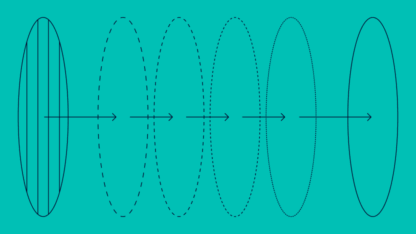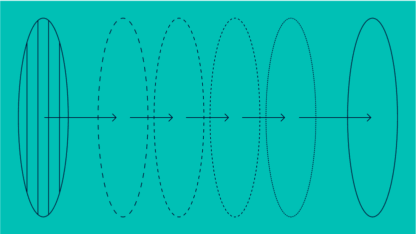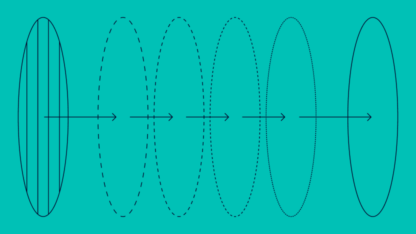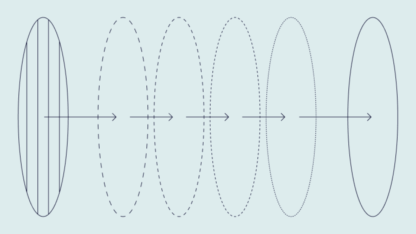Modern fraud no longer kicks the door down. What used to manifest in grand gestures, like brute force attacks or high volumes of stolen credit card charges, is now all but a whisper in the wind. Small charges, AI-generated documents that pass verification and synthetic identities that are engineered to blend in.
These attacks don’t happen in isolation. Fraud networks span borders and exploit coordinated infrastructure, including devices, IP addresses, mule accounts and synthetic identities to commit fraud at scale.
And this is only the beginning: AI-driven fraud could to balloon to $40 billion by 2027 in the US, with year-on-year growth of more than 30%. Yet many fraud systems still treat each case as a standalone event, and this approach no longer works. What businesses need is a way to find the hidden threads that connect seemingly unrelated actions and pull on them until the entire fraud operation unravels.
What Is Network Analysis in Fraud Detection?
Network analysis is a method of detecting fraud by evaluating not just individual users, but the web of connections around them. Instead of treating each account in isolation, it asks: Who is this user connected to, and what do those connections say about their risk level?
A new customer might seem completely legitimate at first glance. They may provide valid-looking information, pass ID checks and behave like any other legitimate customer does. But if that same customer shares an IP address, phone number, device or email pattern with other accounts that were flagged previously (for example, for chargebacks or stolen identities), their fraud score increases. This connection alone could trigger a review, temporary hold or block before the user ever has a chance to harm the business.
What makes network analysis powerful is its ability to detect fraud proactively, preventing bad actors from even entering the system. Traditional tools tend to focus on individual red flags: a mismatched document, an unusual transaction or a login from an unknown location. But fraud today is rarely isolated. Modern fraud is largely committed by organized fraud rings, involving multiple accounts and shared tools. By looking at how users relate to each other, rather than just their standalone behavior, network analysis gives fraud teams a critical edge — one that helps them act before damage is done.
Why Is Network Analysis Important for Fraud Detection?
Fraud networks rely on scale and coordination. They use a mix of synthetic identities, compromised data and reused infrastructure to slip past traditional checks. These tactics are designed to scatter signals and avoid detection by making each account look like a separate, low-risk user.
Network analysis cuts through this illusion by focusing on relationships and patterns within data points. It detects when dozens of new customers apply for credit using the same IP address or device, even if their personal details all look different. It flags clusters of activity, like multiple accounts sending money to the same destination or logging in from the same IP address, indicating a shared operator or control point.
This approach also highlights when normal-looking customers share critical identifiers with other users, such as logging in from the same device or IP address, using the same phone number or billing address copied against multiple profiles or matching email patterns and passwords. Those overlapping signals are nearly impossible to surface with isolated rules alone, but jump out when you view them as part of a connected network.
How to Identify Fraud Rings Using Network Analysis
Network analysis, also known as link analysis or network visualization, is a visual data analysis technique. It represents users, devices, emails, IPs and payment methods as interconnected nodes in a dynamic graph. These connections reveal the hidden structure of fraud networks: connected accounts linked by shared behaviors or infrastructure.
Instead of chasing individual anomalies, network analysis lets analysts investigate patterns. A graph database maps how accounts relate to each other, allowing teams to follow trails through login locations, payment flows or device usage. For example, if several flagged users access their accounts from the same device or IP, network analysis instantly highlights that overlap.
It also helps pinpoint synthetic identities that, while seemingly distinct, share too many digital traits to be a coincidence. It can also track suspicious money movements, like the same money being sent in circles between accounts or several users cashing out at the same time in a coordinated way.
Graph databases are just one way to analyze your network of customers. Their non-linear structure handles multi-dimensional data effortlessly, making it easy to spot complex patterns like collusion or repeat abuse. A fraudster might use a dozen different emails and phone numbers in hopes of staying stealthy, but if all those accounts behave in sync or share the same underlying tech, network analysis surfaces the connection.
This kind of mapping transforms investigations. Instead of reacting to individual alerts, fraud teams can visualize entire networks, identify entry points and take down coordinated actors at scale.
There are also other ways to support investigations. Exploring connected users by looking at specific data points like IP addresses is one way, along with viewing a stack-ranked list of linked users by identical, highly similar and associated connection strength.
Since every investigation is different, it’s important to have the ability to analyze networks by switching between ranked lists, shared data point views and interactive graphs. Investigators can decide how to explore connections based on what delivers the clearest insights without leaving the case.
How Different Sectors Use Network Intelligence to Fight Fraud
Network analysis is transforming fraud detection across industries. Rather than chasing isolated red flags, these tools allow companies to analyze the bigger picture, spotting coordinated activity, shared infrastructure and suspicious behavioral links across user accounts.
- In fintech and digital banking, this means detecting application fraud by revealing when new customers share IPs or devices with known fraudsters. It also helps block synthetic identities during onboarding and flags mule accounts based on transaction patterns that match money laundering networks.
- eCommerce platforms use network analysis to expose fake buyer or seller clusters, catch refund abuse rings and detect when multiple accounts share the same payment details or devices (classic signs of account farming).
- In iGaming, it’s about spotting coordinated player collusion, stopping bonus abuse by linked accounts or uncovering bot networks operating at scale.
- Online lending platforms benefit by identifying synthetic applicants grouped by shared traits, assessing risk based on network behavior and preventing repeat fraud by users cycling through alternate identities.
Across all these use cases, the advantage is clear: network analysis brings depth and context. It connects the dots between users and infrastructure, making fraud easier to detect and harder to miss. This not only improves accuracy and automation, which is crucial in fast-moving, high-volume environments.
What To Look for in a System With Network Analysis Capabilities
Choosing the right network analysis solution is key to staying ahead of organized fraud.
- Real-time monitoring: At its core, the system should deliver real-time insights. Fraud moves fast — new connections, behaviors and anomalies emerge constantly and a reliable system must recalculate risk scores instantly as fresh data flows in, enabling proactive intervention instead of delayed reaction.
- Scalability: Modern fraud networks can involve millions of linked entities: users, devices, IPs, payment methods and more. A strong system must handle this volume without performance degradation, allowing teams to assess risk across vast digital ecosystems without missing key patterns.
- Transparent decisioning: Fraud teams need to understand why a user was flagged. That means clear logic, traceable decisions and explainable scores. If a risk score spikes due to shared infrastructure or behavioral overlap, the system should make that cause obvious.
- Flexibility and customization: Every business faces different threats, so a one-size-fits-all model doesn’t cut it. The ability to tune weights, thresholds, and triggers based on sector-specific fraud patterns ensures relevance and accuracy.
- Centralized insights: Most importantly, the system should integrate link analysis and behavioral signals into one unified framework. This means it doesn’t just draw graphs of connections — it overlays them with risk insights like device reputation, velocity anomalies, or known fraud history.
How SEON Helps Uncover Hidden Connections
Fraudsters and money launderers don’t operate alone. SEON’s fraud prevention software connects the dots in real time, surfacing the hidden relationships between accounts, devices and identities that signal coordinated fraud.
- Connect signals in real time: Shared devices, reused emails and suspicious IPs may seem harmless on their own, but they can be early signs of fraud. SEON links these signals instantly to uncover coordinated behavior.
- Investigate by data points: Data Explorer lets you dive deep into how accounts are connected. By mapping shared data points, like phone numbers, addresses or payment methods, you can quickly investigate whether an account is genuine or part of a wider network.
- Reveal connected users: Fraudsters often use subtle variations in names, emails and usernames to create multiple accounts or evade blacklists. SEON’s Similarity Ranking highlights these overlaps automatically, surfacing accounts with identical or highly similar data points.
Fraud and money launderers count on staying hidden. SEON uncovers the connections that matter, helping you stop fraud before it hits.
Speak with an Expert
Sources
Deloitte: Generative AI is expected to magnify the risk of deepfakes and other fraud in banking
Frequently Asked Questions
A network score is a numerical value that indicates the level of risk associated with a user or account based on their connections to other entities, such as shared IP addresses, devices, email addresses or links to known fraudsters. This score helps fraud teams prioritize investigations by highlighting accounts that may be part of larger networks.
Network scoring can identify a wide range of fraud schemes, including organized fraud rings, mule account networks, bonus abuse, refund scams and synthetic identity clusters. By analyzing connections and shared infrastructure, it uncovers patterns that traditional single-entity checks often miss.
Graph networks detect fraudsters by visualizing the complex relationships between users, devices, IPs and other data points. This allows analysts to spot clusters of coordinated behavior and shared attributes, making it easier to identify groups of fraudulent accounts acting together.
Network risk assessment helps prevent fraud by proactively identifying accounts that exhibit risky connections or behaviors. Instead of reacting after fraud occurs, it flags suspicious networks early, enabling businesses to block or review high-risk users before damage happens.
Yes, network risk scoring is especially effective at detecting synthetic identity fraud. By examining links between seemingly unrelated accounts, such as shared devices or IPs, it uncovers synthetic identities that pass traditional checks but reveal connections to known fraud activity.









